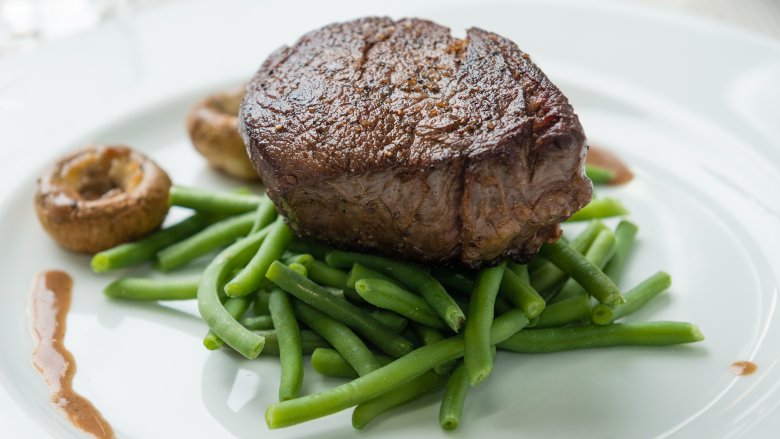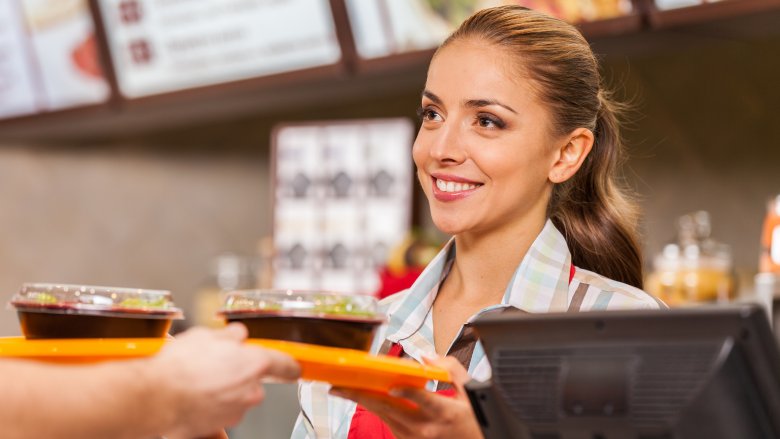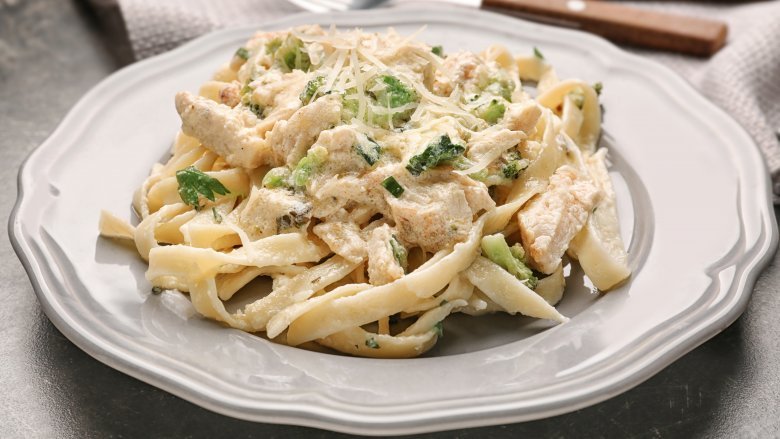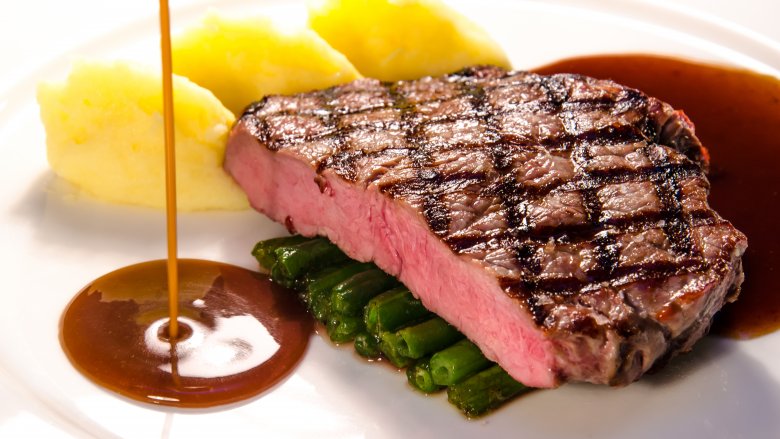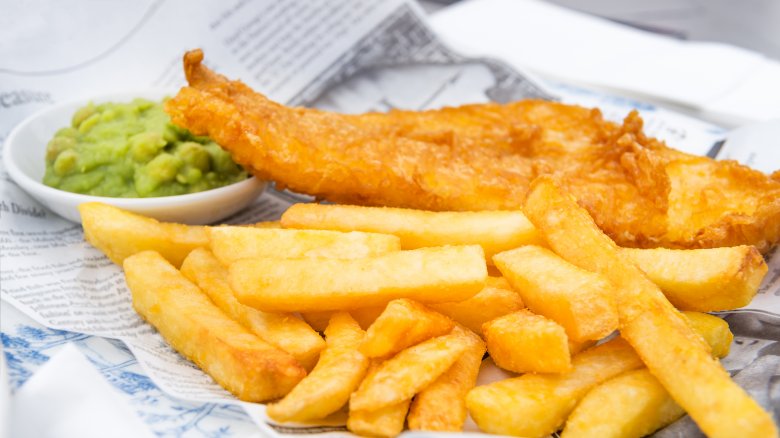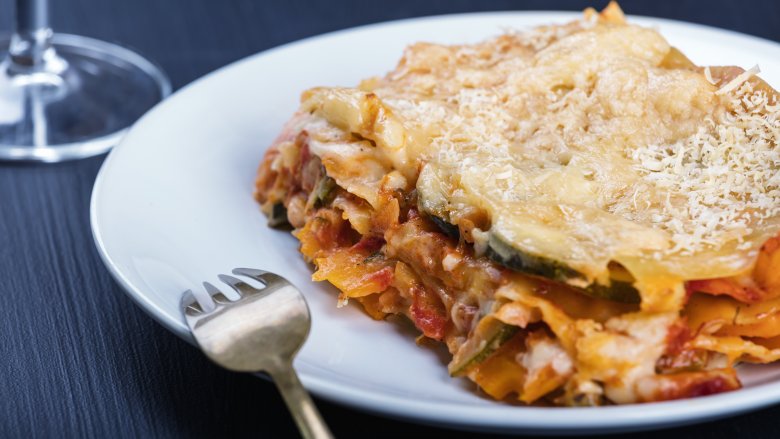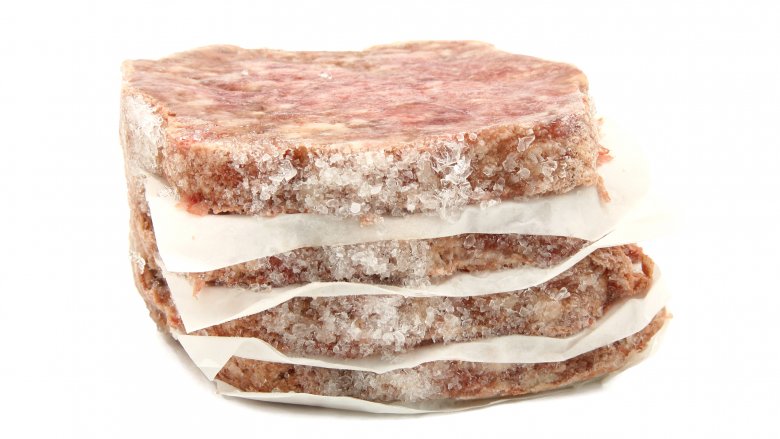Signs You're Eating Pre-Made Food At A Restaurant
If you're anything like us, you have pretty high expectations when you walk into a full-service restaurant. And the things that you expect don't seem like too much to ask — especially for the prices some of them are charging.
If you're heading to your favorite sit-down restaurant, you expect a comfy table, an enjoyable atmosphere, and good service. Oh, and there's a good chance you expect to be served fresh food, made as soon as you're done placing your order — it's not a fast food place, after all. There's no doubt the chef in the back is prepping your meal for the oven or the grill as soon as the waitress tells him what you want, right? Maybe... or maybe not.
Even at fine dining restaurants, serving pre-made food is a commonality most patrons are not aware of, and it happens a lot. So unless you absolutely love reheated leftovers, here are some clues to help you figure out when the food you're eating has been pre-made.
If your restaurant order is up in a snap it might be pre-made
You may be excited to see your waitress approaching with your food as not long after you order it, but the biggest indicator that you're dining at a restaurant serving pre-made food is how quickly your food arrives at the table.
A freshly prepared meal that's made-to-order takes time. What doesn't take much time is reheating pre-made food, like is often done at fast-food restaurants. If you're at a non fast-food restaurant and the food comes out lickety-split like drive-thru service, that's a telltale sign that the restaurant is serving pre-made food.
After all, it should take a lot longer to make a fresh grilled chicken breast or risotto than it does to assemble a fast food burger.
We all like fast service, but all good things take time, and that includes freshly made food.
If the menu offers an extensive list of options, some it is probably already made
We all appreciate having choices, but there can be too much of a good thing.
One look at a menu offering items a mile long may send your brain into a tizzy trying to figure out how the chef does it. Well, here's a little secret — he probably doesn't.
An extensive menu means the chef has to have all those ingredients on-hand, which make it difficult to guarantee freshness along with timeliness. Can you imagine sifting through the ingredients for 100 different entrees — and then trying to cook them all at once?
To solve this problem, chefs often use pre-made food. That can range from already packaged products to preparing the meals in advance, but either way, they're getting a head start — and the quality of your meal may suffer from it.
If you pick up a menu that has pages and pages of items on offer, maybe check out that new place next door instead. Or at least be ready to eat something that's seen the inside of a microwave.
If you're at a popular chain restaurant, the food is probably pre-made
Often enough, the establishment you're dining at is the first indicator that you're meal is pre-made.
Choosing a chain restaurant for your dining destination may seem like a safe choice — you know what's on the menu, and you know what it's going to taste like, no matter what city you're in. Chain restaurants are consistent in their meals for a reason, they're pre-made.
If you've ever wondered why, say, your Alfredo dish at Olive Garden looks and tastes the same no matter what Olive Garden you're at, it's because there's probably not a chef in the back painstakingly preparing each dish from scratch.
Chain restaurants usually have a rigorous process of food preparation that happens before it even reaches the restaurant. The food is often mass produced, frozen, and then heated and assembled according to strict guidelines.
So yes, your Alfredo will be the same every single time you order it, and so will most of your other meals at chain restaurants. For them, consistency is key. That may be a good thing if you like that dish, but it's time to give up an misconceptions that it's a freshly-made meal.
If the texture of your meal isn't normal, it might be pre-made
Say you're at a restaurant and you order a steak cooked rare. You wait in anticipation, salivating over the thought of slicing into a juicy, pink steak. Your order arrives and it looks just like you imagined it would, except for the taste. You've had a rare steak before, but this seems more like rubber than meat. That's probably because your steak hit the microwave before it hit your plate.
And it's not only the texture that changes when it's been microwaved. Studies have shown that meat cooked in a microwave will have less flavor than meat cooked on a grill, as the rapid cooking means it has much less time for the flavor to develop.
Anyone who has prepared a home cooked meal can tell the difference between something prepared fresh, and something that's been nuked to death in the microwave. When you order food at a restaurant and the textures and tastes are a bit off, you know in an instant that your meal wasn't fresh. How much time it spent reheating in the microwave on the other hand, is a question you can ask your server.
If all the seafood on the menu is fried, it was probably frozen
A menu containing nothing but fried seafood? Now we smell something fishy.
Restaurants that only offer seafood in fried form is a clear indicator that the restaurant doesn't serve fresh fish. Breading and frying seafood is an easy way for cooks to mask the fact that the fish was previously frozen. It's possible that they didn't even bread the fish themselves.
Food distributors offer a variety of pre-made fried fish, so all the restaurant has to do is heat and serve. Next time you order up a plate of fried Baja fish tacos or fish and chips, don't be surprised if your fish was reheated in a deep fryer. Especially if there's not a piece of breadless, non-fried fish in sight.
If substitutions can't be made, it's probably because it's already made
Leaving cheese or bacon off a burger shouldn't be a problem at a sit-down restaurant. But how about ditching the mushrooms in your veggie lasagna? Or the chicken in your minestrone soup? High-end restaurants can surely handle a request like that, right?
If your servers says they can't make a substitution, it's probably because that dish has already been made. Think about when you make these meals at home. You don't make single portions, and neither do the restaurants. Making certain menu items fresh from scratch would take a great deal of time, not to mention slow down service. So if you notice that certain menu items can't be substituted, odds are they're prepared it in advance, and reheated when you order.
If your food tastes like freezer burn, it may have been pre-made
Anyone who has prepared a frozen dinner can easily attest to the flavors of freezer burn — they can also detect it when a restaurant serves it.
Freezer burn changes the composition of your food, resulting in off flavors, textures, and colors. This is especially noticeable when eating meat.
Before you even have a chance to bite into the steak your waiter just placed in front of you, check to see if there are some grayish spots. If so, that's freezer burn. That means it's been frozen, and it may have been cooked before it hit the freezer.
